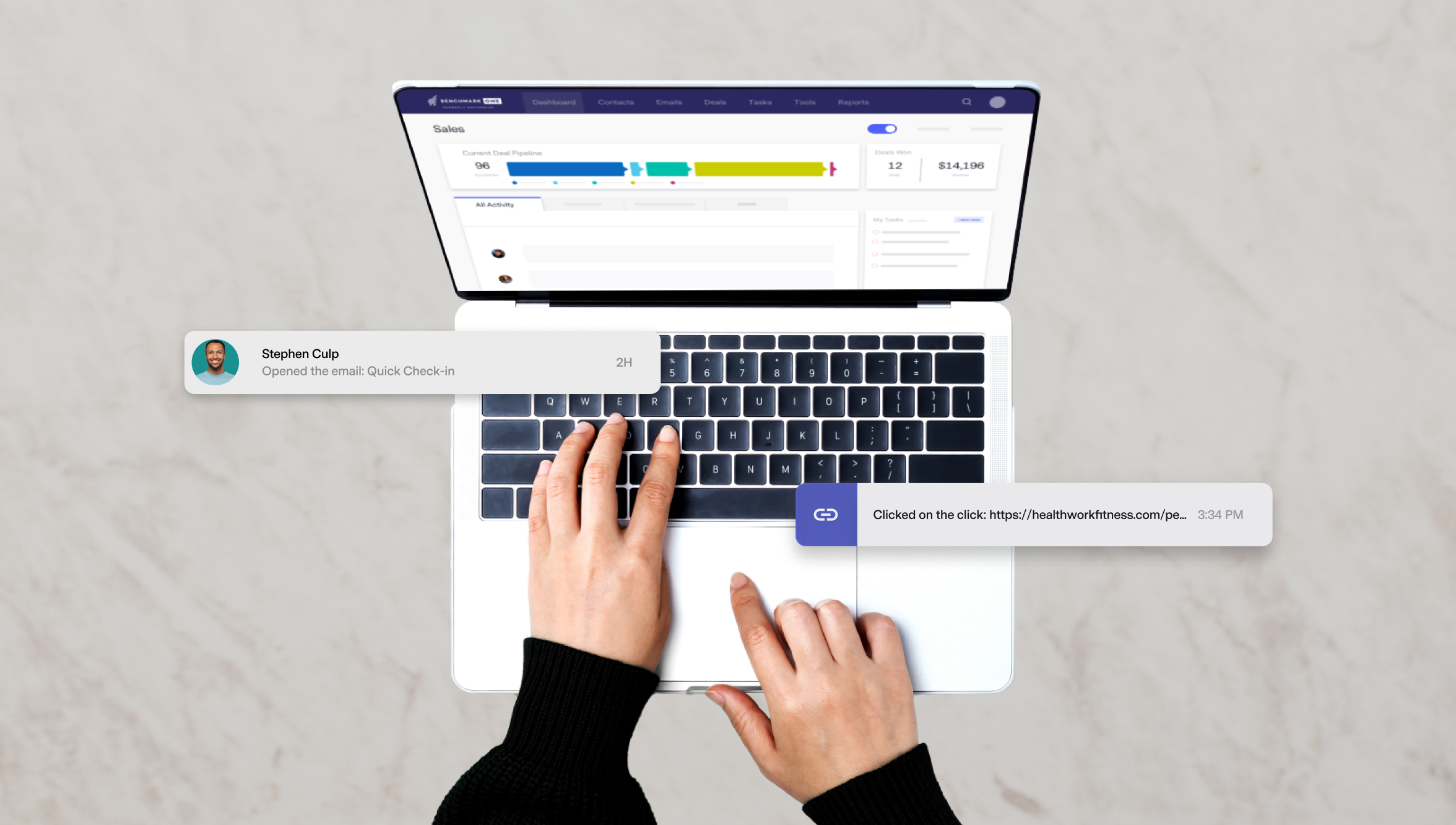Marketing Automation Benchmark Recommends
Email Automation vs. Marketing Automation: What’s the Difference?
June 13, 2024 5 min read

When it comes to digital marketing, automation has emerged as a game-changer, streamlining processes, enhancing efficiency, and driving results. While email automation and marketing automation are often used interchangeably, they serve distinct purposes and offer unique benefits.
Let’s explore the differences between email automation and marketing automation and how each can empower your marketing efforts.
Introduction to and Defining Marketing Automation
Marketing automation encompasses a broad range of tools and processes designed to improve efficiency and effectiveness across various marketing channels. This can include email marketing, social media management, lead generation, customer relationship management (CRM), and analytics. By automating these functions, businesses can ensure timely, tailored interactions with their customers, which can lead to increased engagement and conversions.
One of the biggest selling points of marketing automation is that it allows marketers to nurture leads throughout the customer journey. Through automated workflows, businesses can deliver tailored content and offers to prospects based on their behaviors and needs. This not only enhances the customer experience but also helps identify high-quality leads and move them through the sales funnel more efficiently. You should also use a customer experience platform along with email automation tools to elevate your customer relationship and loyalty.
Furthermore, automation provides valuable insights into campaign performance. Advanced analytics and reporting tools enable marketers to keep an eye on key metrics, understand the behavior of their customers better, and make decisions backed by data.
In essence, automation in marketing is about leveraging technology to enhance human capabilities. It enables businesses to scale their efforts, maintain consistent communication, and adapt quickly to changing market conditions. As we delve deeper into the distinctions between email automation and broader marketing automation, it becomes clear how these technologies can work in tandem to deliver remarkable results.
Defining Email Automation
Email automation is a specific subset of marketing automation focused on streamlining and optimizing email marketing activities. It’s the act of using software to automatically send emails based on predefined triggers, schedules, or customer behaviors. This gives businesses the ability to deliver timely and relevant messages to their subscribers without manual input.
Email automation is designed to enhance engagement, build relationships, and drive conversions. It enables marketers to create sequences of emails, known as workflows or drip campaigns, that are sent out in response to specific actions or events. These actions can include a variety of customer interactions, such as signing up to receive an email newsletter, making a purchase, abandoning a shopping cart, or simply browsing a website.
Key components of email automation include:
- Triggers: Triggers are events or conditions that initiate an automated email or sequence of emails. Common triggers include new subscriber sign-ups, purchase confirmations, and inactivity for a certain period.
- Personalization: Automated emails can be highly personalized using data such as the recipient’s name, past purchase history, preferences, and behavior. This personalization helps to increase engagement and make the communication more relevant and impactful.
- Segmentation: Email automation platforms allow for the segmentation of email lists based on criteria like demographics, behavior, and engagement levels. This ensures that messages are tailored to specific audience segments, improving their effectiveness.
- Scheduling: Automated emails can be scheduled to be sent at optimal times based on when recipients are most likely to engage with them. This can be determined through historical data and behavioral analysis.
- A/B Testing: Many email automation tools offer A/B testing capabilities, allowing marketers to test different subject lines, content, and send times to determine what resonates best with their audience.
- Analytics and Reporting: Robust analytics and reporting features allow for tracking the performance of automated emails, providing insights into open rates, click-through rates, conversion rates, and overall campaign effectiveness.
Common applications of email automation include:
- Welcome Emails: These are emails sent to new subscribers, introducing them to the brand and set expectations for future communications.
- Abandoned Cart Emails: Reminders sent to customers who have added items to their cart but have not completed the purchase.
- Nurture Campaigns: Series of emails designed to educate and engage prospects over time, gradually guiding them towards a purchase decision.
- Re-engagement Campaigns: Targeted emails aimed at reactivating inactive subscribers or customers.

Differentiating Between Email and Marketing Automation (In a Nutshell)
The key difference between email automation and marketing automation lies in their scope and functionality. While email automation focuses specifically on automating email communications, marketing automation encompasses a wider range of marketing activities and channels. Email automation is a subset of marketing automation, providing a targeted solution for automating email campaigns.
Exploring Software Solutions
A variety of software solutions are available for both email automation and marketing automation. Email automation platforms, such as Benchmark Email, offer features specifically designed for automating email campaigns. Marketing automation platforms, such as BenchmarkONE, provide a comprehensive suite of tools for automating various marketing processes across multiple channels.

Sign up for a free Benchmark Email account today!
SIGN UP FREEBenefits of Automation
Email automation offers several benefits for marketers, including:
- Increased Efficiency: Automating email campaigns saves time and resources so you can focus on other items on your to-do list.
- Personalized Communication: Email automation allows marketers to deliver targeted messages based on subscriber behavior, preferences, and interests.
- Improved Engagement: By sending timely and relevant emails, marketers can increase engagement and nurture relationships with subscribers.
- Enhanced Conversions: Automated email campaigns can drive conversions by delivering the right message to the right audience at the right time.
Marketing automation benefits include:
- Streamlined Processes: Marketing automation streamlines workflows and eliminates manual tasks, improving efficiency and productivity.
- Holistic View of Customers: Marketing automation platforms integrate data from multiple sources to provide a comprehensive view of customer interactions and behavior.
- Targeted Campaigns: Marketing automation enables marketers to segment their audience and deliver personalized messages across multiple channels.
- Data-Driven Insights: Marketing automation platforms offer robust analytics and reporting capabilities, allowing marketers to track campaign performance and make data-driven decisions.
While email automation and marketing automation share the common goal of streamlining marketing processes and driving results, they serve distinct purposes and offer unique benefits. Whether you’re looking to automate email campaigns or orchestrate comprehensive marketing campaigns across multiple channels, choosing the right solution depends on your specific needs and objectives. By understanding the differences between email automation and marketing automation, marketers can leverage the power of automation to achieve their marketing goals with precision and efficiency.






